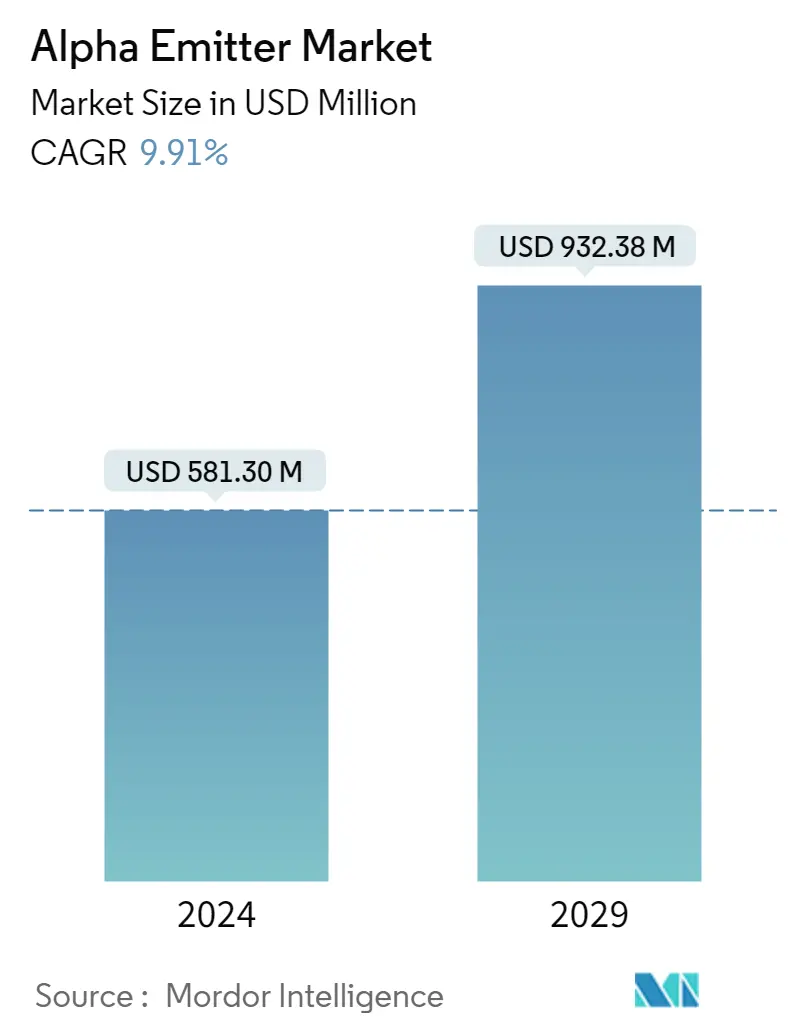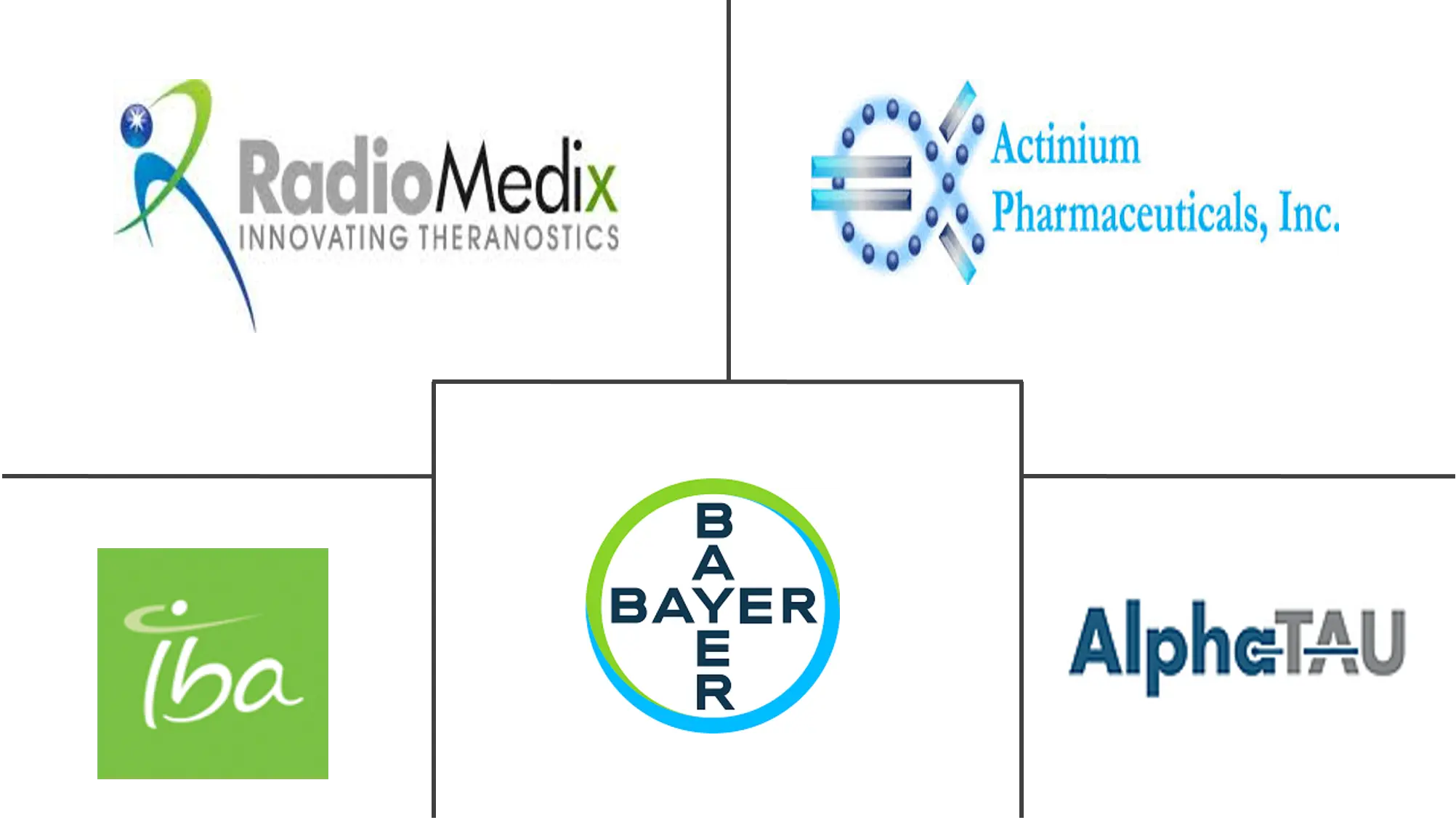Market Size of Alpha Emitter Industry

| Study Period | 2019 - 2029 |
| Market Size (2024) | USD 581.30 Million |
| Market Size (2029) | USD 932.38 Million |
| CAGR (2024 - 2029) | 9.91 % |
| Fastest Growing Market | Asia Pacific |
| Largest Market | North America |
Major Players
*Disclaimer: Major Players sorted in no particular order |
Need a report that reflects how COVID-19 has impacted this market and its growth?
Alpha Emitter Market Analysis
The Alpha Emitter Market size is estimated at USD 581.30 million in 2024, and is expected to reach USD 932.38 million by 2029, growing at a CAGR of 9.91% during the forecast period (2024-2029).
Certain factors that are driving the market growth include increased awareness about the potential benefits of targeted alpha therapy and the growing number of patients with cardiac and cancer ailments.
The global pandemic of COVID-19 is predicted to have an impact on the alpha emitters market. Consequently, the reduced contact with physicians in outpatient consultations in the initial period of the pandemic resulted in a decreased number of patients being referred to nuclear medicine for diagnosis and treatment; this effect being less prominent for oncological patients. During the COVID-19 outbreak, according to a survey published in the PMC Journal in September 2020, a total of 434 responses from 72 countries confirmed a significant reduction in nuclear medicine procedures; more than 50% in diagnostic and 40% in therapeutic procedures. However, as the population has begun to cope with the pandemic, the need for cancer care is expected to boost, which is expected to significantly impact the market.
An increase in awareness of the potential benefits of the targeted alpha emitter and a high number of patients with various types of cancers such as ovarian cancer, pancreatic cancer, lymphoma, and melanoma are likely to boost the market growth. In addition, increasing the use of targeted anticancer or alpha therapy (TAT) in the treatment of cancer and alpha particles has an advantage in targeted therapy because of their exceptionally high cell-killing ability. For instance, according to the International Agency for Research on Cancer (IARC), by 2040, the global burden is projected to increase to 27.5 million active cancer incidents and 16.3 million cancer deaths primarily due to population growth and aging. About 70% of deaths from cancer occur in low- and middle-income countries. Thus, the rising cases of cancer and cardiovascular diseases are expected to surge the demand for radiopharmaceuticals for the treatment of these diseases.
Companies are now increasingly aware of the potential benefits of targeted therapies to treat several chronic ailments. Radioimmunotherapy with short-ranged, high-efficiency α-particles is a striking and promising treatment approach. α-particles have an advantage in targeted therapy due to their exceptionally high cell-killing ability.
However, regulatory requirements pose a hurdle to translational research and clinical investigations. For instance, in the United States, all pharmacologic agents, including diagnostic radiopharmaceuticals and radio therapeutics, undergo regulatory oversight by the FDA. Similarly, radiopharmaceuticals face additional scrutiny and undergo unique regulatory and approval pathways across the world.
